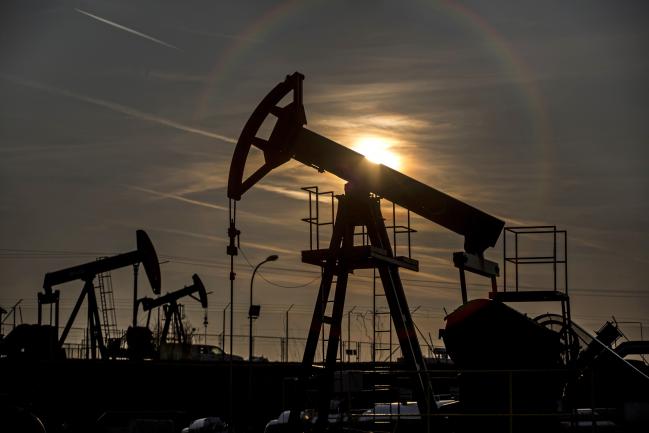(Bloomberg) -- Traders played follow-the-bouncing-ball with oil prices that fluctuated within an 85-cent range Monday before settling in little changed on a day OPEC boosted its demand projections for 2018.
Futures in New York rose as much as 0.7 percent at one point, breaching $57 a barrel. They then fell 0.8 percent, before settling in at a mid level between the two that left prices little changed. OPEC raised its estimates for the amount it will need to pump to meet demand next year by 400,000 barrels a day to 33.4 million a day, according to a monthly report from the group.
"With OPEC raising estimates, there’s an expectation that the market’s a lot tighter," said Phil Flynn, senior market analyst at Price Futures Group Inc. in Chicago, in a telephone interview. "We’ve gone from mentality of glut, glut, glut, to more rebalancing."
Oil has climbed about 20 percent since the start of September as global supplies tighten and speculation mounts that the Organization of Petroleum Exporting Countries will extend output curbs past the end of March. In Abu Dhabi on Monday, OPEC Secretary-General Mohammad Barkindo described the production curbs as the “only viable option” to rebalance a global market still contending with excess supply.
Prices have also been boosted by internal upheaval in Saudi Arabia, OPEC’s biggest member, and escalating tensions with its rival and fellow producer Iran. An oil pipeline between Saudi Arabia and Bahrain halted briefly over the weekend following an attack.
"Without this fervor being continually fanned, prices are vulnerable to falling back," said John Kilduff, a partner at Again Capital LLC, a New York-based hedge fund, by telephone.
At the same time, crude stockpiles at the storage hub in Cushing, Oklahoma fell 1.9 million barrels to 64.6 million in the week ended Nov. 10, Genscape said, according to people familiar with the report. The dip comes after the Energy Information Administration reported supplies in the previous week were at the highest seasonal level going back to 2004.
West Texas Intermediate for December delivery traded 8 cents higher at $56.82 a barrel on the New York Mercantile Exchange at 12:08 p.m. local time. Total volume traded was about 1 percent above the 100-day average. Prices capped a fifth weekly gain last week, the longest run since October 2016.
See also: BP (LON:BP) Sends in Big Guns as Majors Jostle for Abu Dhabi Oil Riches
Brent for January settlement fell 26 cents to $63.26 a barrel on the London-based ICE Futures Europe exchange, after rising 2.3 percent last week. The global benchmark crude traded at a premium of $6.23 to January Crude Oil WTI Futures.
OPEC raised estimates for the amount of crude it will need to pump next year by 400,000 barrels a day to 33.4 million a day, according to a monthly report from the group.
Saudi Arabia said it will boost security at its oil facilities after Bahrain blamed Iran for a fire at a pipeline that connects the two Arab allies. Iran denied that it was involved. The pipeline resumed pumping later in the day after a brief halt.
The pipeline attack “is a dangerous Iranian escalation that aims to scare citizens and hurt the global oil industry,” Bahrain’s Foreign Minister Khalid Al-Khalifa said on Twitter. Iran responded by saying the Bahrainis “need to know that the era for lies and childish finger-pointing is over,” the Islamic Republic News Agency reported Sunday, citing a foreign ministry spokesman.
Oil-market news:
- Hedge funds raised their Brent net-long positions by 2.4 percent to a record 543,069 contracts in the week ended Nov. 7, according to data from ICE Futures Europe.
- Official selling prices for December sales of flagship crudes pumped by Iraq, Iran and Kuwait show they are undercutting Saudi Arabia’s pricing for refiners in Asia.
- Abu Dhabi National Oil Co. kick-started a round of privatizations in the Middle East oil industry, saying it will sell shares in its retail fuel stations unit and list them on the local stock exchange.
